Ok, so you know how to play cricket but you want to improve. Become a better cricketer. Wield a cricket bat with power and precision. Deliver a cricket ball like a magician.
Well, you’re in the right place…
Whether you’re a wickedly fast bowler with a Premier League club or a nervous number eleven who barely knows how to hold a bat, one thing is for certain: you can always improve.
Cricket, even for those who’ve played it day in day out for decades, can feel like a complex, baffling game sometimes. Just when you think you’ve found your groove through patient batting drills, there’s a drop in form out of nowhere.
So, how do you become a better cricketer? How to play cricket smarter? Here’s our guide to putting in the hard yards and seeing the results that will lift your confidence and performance.
Batting practice, bowling practice, repeat…
A strange thing happens in cricket. If you play as a child, you might get coached, go to nets, train hard and get picked for matches. It’s a strategy that works.
As adults, we often skip the practice bit. Indoor cricket nets can be seen as a bit of a laugh and don’t replicate how we’d actually play cricket in a match. Outdoors, some clubs struggle to get anyone to batting practice.
Though many cricket clubs have qualified coaches, it’s only the kids who are getting the batting drills or advice on swing bowling. Why? It depends how seriously you take your cricket but for some, being coached is not for them.
If you want to become a better cricketer, it starts with cricket practice. Not rocket science but true nonetheless.
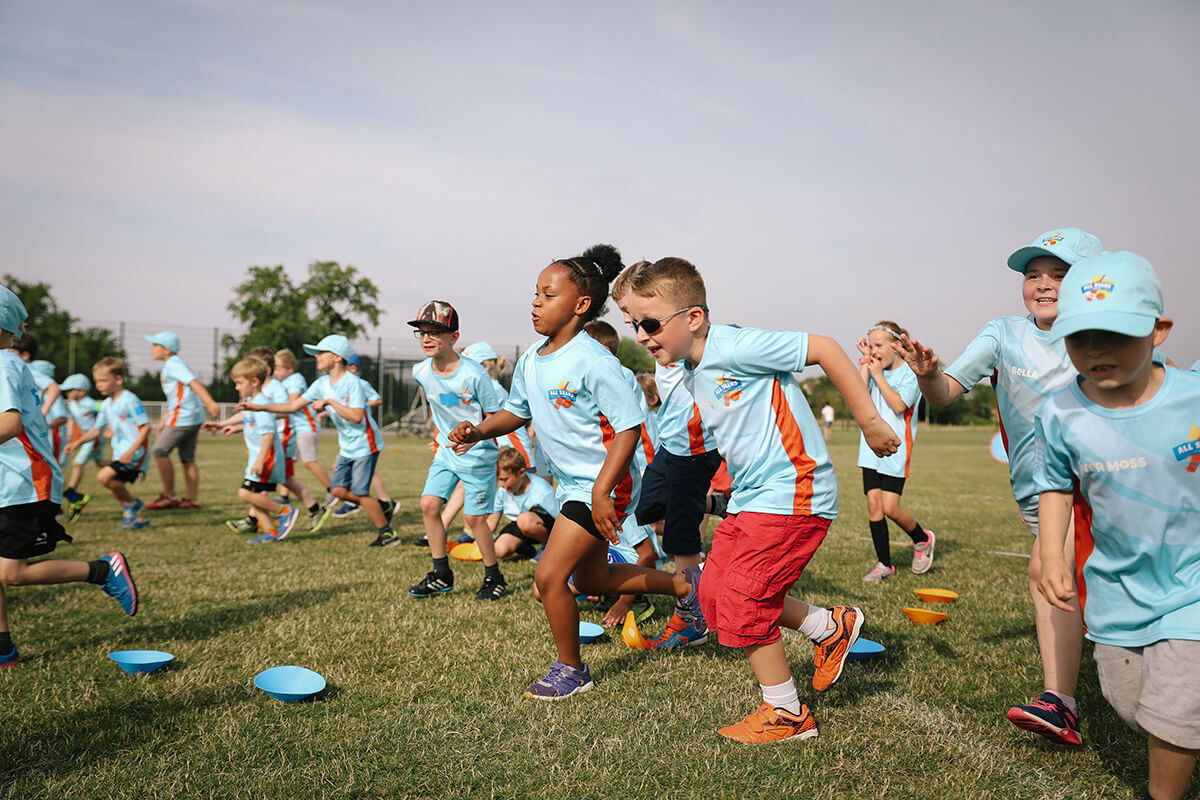
Warm up first
Cricketers of all ages and abilities should warm up before a cricket session. The purpose is to stretch muscle groups and prepare your body and mind for the exercise and demand about to be placed on it.
It will make it more likely you’ll perform at your best and is a way to help avoid injuries. Here’s some tips on how to warm up for cricket. Build in enough time that this becomes part of all your cricket training.
Making indoor nets work well
During the winter, most cricket clubs book indoor cricket nets for a number of months. It is a popular habit and one that can produce a boost in performance - if you take it seriously.
The success of these devoted hours of cricket practice can largely depend on numbers. Having three bowlers in a net for an hour usually leads to fatigue, boredom and a poorer quality of session. Equally, too many in a net can also be detrimental. Aim for 4-6 per net.
One obvious, immediate upgrade is to organise nets according to standard. Yes, it can be fun to face the quickest bowler in your club but also disheartening, maybe even dangerous and not necessarily what you’ll face in an actual match.
If the true purpose of cricket nets (indoors or outside) is to get better then have separate nets for each team or age group. Many clubs have teams that play cricket in different divisions or even different leagues so standards can vary enormously.
If you’re struggling for numbers, consider approaching another local club to join forces at a certain time of net session. Or, have less bowling lanes and mix the standards up if you have to but supervise and tell bowlers to go easy on lesser experienced cricketers.
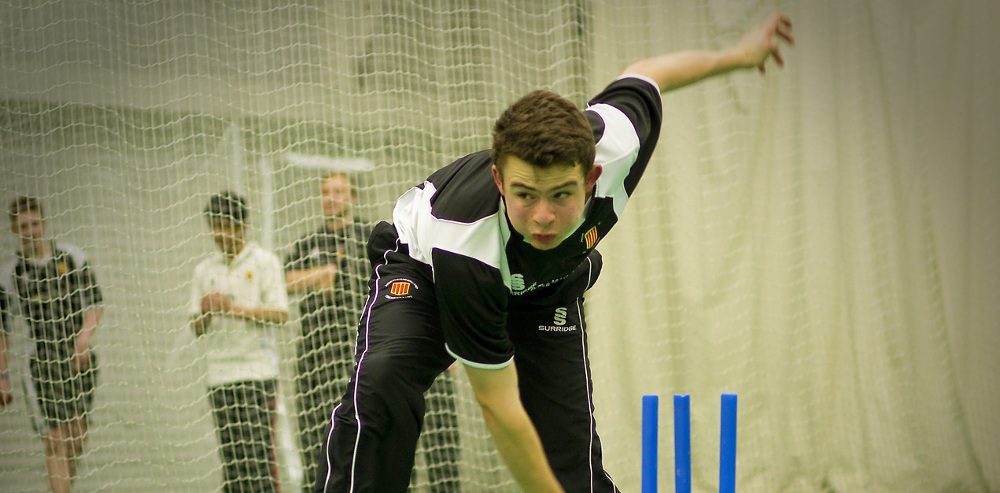 Cricket: bowling quick wins
Cricket: bowling quick wins
Whether you’re into fast bowling, swing bowling or spin bowling, the basics still matter and are often the first things to be forgotten.
Get someone to stand at the stumps, like a cricket umpire would, and check no-one is bowling no-balls. If you are bowling no-balls in a cricket net, you may well bowl them outdoors too.
Measuring your run-up and avoiding no-balls
Find out how much your foot is overstepping by and re-calculate your bowling run-up. It should be the same every time; something that you repeat exactly over after over, season after season.
There isn’t one way to run up to bowl a cricket ball. It has to feel right for you and if it doesn’t, try different speeds, angles and lengths of run-up until it’s effortless.
It’s important because a faltering run-up can be the cause of you losing your momentum and accuracy. Who wants to bowl a wicket-taking delivery then see it chalked off as a no-ball?
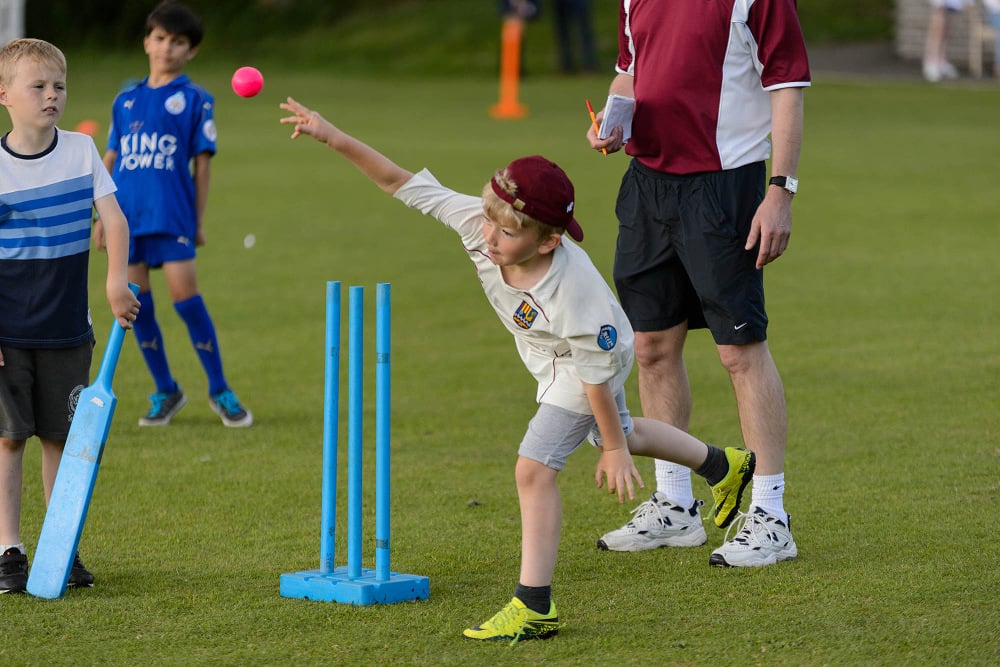
Bowling targets and scenarios
As with measuring your run-up and the advice on preventing no-balls, enacting bowling scenarios can be done indoors or outdoors.
Rather than just bowling until everyone is tired and starts spearing it down leg-side, the idea is to be more strategic.
At each net session, work on a particular aspect of your game you want to improve on. Is it developing a new type of delivery you’ve not learnt yet? So, get the grip right and practice.
If it’s not quite working, make adjustments and ask a coach/senior players if you need advice or someone to watch how you bowl.
Running game-play scenarios turns something as routine as cricket nets into a challenge that can make you a better cricketer.
It could be you have to bowl a certain delivery for an over, focus on accuracy to keep the runs to a pre-set limit, whatever the target, it freshens things up.
Mini-games achieve the same objective. Consider bowlers and batters starting with a set number of points and no-balls or wides lose a point and same goes for with a wicket. Post a score to reach in an over or last wicket of the match so defence is key.
Bowling lengths
One of the most basic mistakes, particularly when training indoors, is to see bowlers get carried away with the bounce they can achieve and pitch the ball much shorter.
Fast bowlers lick their lips that they can bang the ball in halfway down and get it roaring past the batsman’s head. This is fine if it’s a way to fine-tune either a bouncer or a batsman’s technique for playing short-pitched bowling.
However, don’t over-do it. This in no way mimics what it will be like on a muddy, April wicket in the UK so practice bowling the right length for a type of ball or against a certain batsman.
Of course, part of the learning process for any cricketer is being able to adapt to playing conditions and a wicket that might be spinning or bouncing more or less. But, try not to lose sight of your objective.
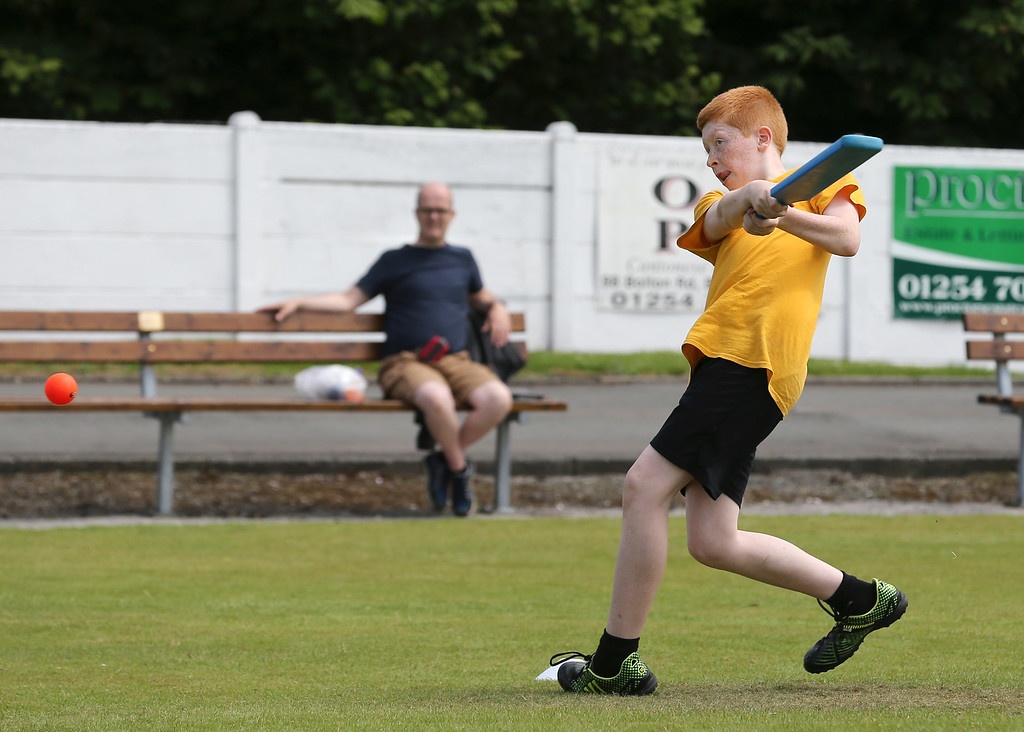
Cricket: batting easy wins
Whatever standard of cricketer you are, batting practice can be used to re-examine some of the things you take for granted.
As adults, it might be we’ve had years of playing and those habits have become engrained. But it never hurts to ask a few questions in the quest to improve.
How to hold a bat, stance and back-lift
Of course you know how to hold a bat. Ridiculous, eh? But think about it. How often do we learn something once and that’s what we do for life, whether it’s right or wrong.
It’s true that cricket is a game that caters for many styles and that includes how you hold a bat. However, the most commonly coached style is simply to put a cricket bat on the floor and stand with your feet either side.
Pick it up with your right-hand at the bottom so it forms a ‘V’ formation with your thumb and forefinger pointing down the bat. Your other hand will naturally sit alongside it as a guiding top-hand.
You can see here how that looks in this coaching tutorial as well as an easy test to check if your grip is allowing you to comfortably play your shots.
Your batting stance is your base and is where your balance, alignment and power starts from.
Your feet should be shoulder-width apart, legs slightly bent, acting as a solid foundation, ready to move forwards or backwards.
Head position is important and the mantra is ‘head up, eyes level’ rather than tilting over to the side that will affect how you see the ball, your balance and positioning for shots. Here’s Mark Ramprakash discussing the batting stance:
When we talk about the back-lift of a bat, it’s the path your cricket bat takes from the floor to behind you, ready to execute a shot. It also affects the line your cricket bat takes as it moves to strike a cricket ball.
Why is back-lift important?
Firstly, it means you’re ready. If you don’t do it or it’s minimal then you still have to lift the bat off the ground, raise it for power then move it towards the ball. That all takes time.
So, make sure you have a back-lift of your cricket bat as the bowler is running in. The angle is important too. If your bat is picked up at a strange angle, it will likely follow that trajectory and be at a disadvantage with following the correct line of the ball.
Batting drills using cricket nets
With typical club cricket net sessions that last an hour or two, go into it with the mindset of batting practice with a set goal. What is the outcome? Nailing the pull shot, footwork to spin bowling or a defensive masterclass?
There’s a reason the professionals smash thousands of balls behind-the-scenes. Part of that is muscle memory - i.e.) repeating an action many times to reinforce it and almost make the cricket shot/delivery second-nature.
If the space and number of people allows it, have one lane dedicated to coaching. A coach can aid each batsman hone a particular shot and work together on something precise such as how to increase bat speed.
Another way of organising things could be that there’s a mini-debrief after a batsman has had their time practising to assess how it went and what the player can work on further.
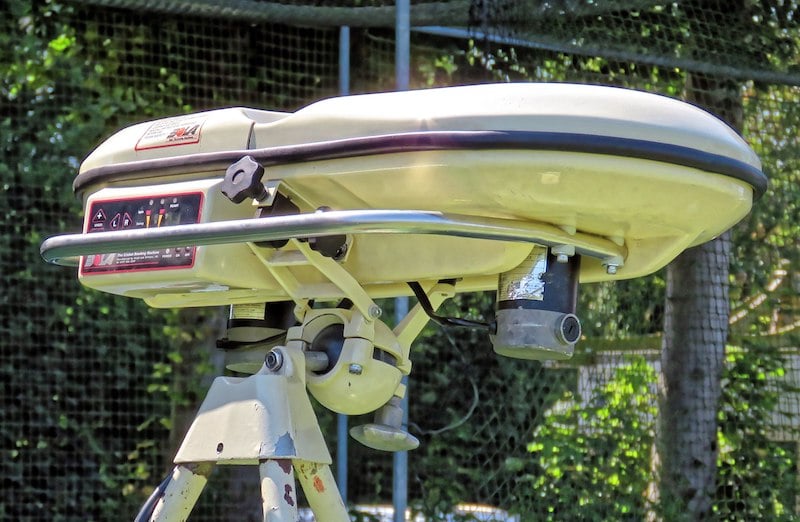
Use a cricket bowling machine?
To continue the point from above, one issue with cricket nets is that a batsman will face potentially 6 or 7 different bowlers, one after another, left-handed and right-handed, spin bowling and swing bowling.
The benefit of a cricket bowling machine is that it can be set up to practice a certain shot and will put the ball in exactly the right place again and again at any speed. Something net bowlers can’t often do!
A 15-minute stint with a bowling machine can be as useful as an hour with lots of club-mates. There is usually an additional cost to renting a cricket bowling machine but using one, alongside facing your team’s bowling, is well worth doing.
It’s an intense workout that will be challenging and good fun.
Make the time count
Each batsman is usually given a set amount of time. It's rare but some coaches may take the approach that if you’re out in the nets, your session ends there and then (unless there’s spare time later).
That will reduce individual practice time (and needs batsmen padded up as substitutes) but it also gets a batsman treasuring their wicket and thinking carefully. It won’t be for everyone but might be worth trying one week. It’s about a mindset shift and bringing a more professional approach to training.
Batting in pairs
Make your cricket training as realistic as possible. Try two batsmen (fully padded up) in a cricket net as you would in a match and rotate the strike, practice running between the wickets, calling and sliding your bat in.
It might feel unusual to do it in a cricket net but if it becomes automatic indoors, it will be engrained and show when you’re starting matches in the season.
Again, build in time for some scenarios rather than just filling time. Work on something specific. Engineer a match situation and play accordingly to score runs, defend or rotate the strike.
Power of video for cricket coaching
Video can be a great way to show batsmen or bowlers a particular technical point and help them to understand it. Alternatively, your cricket club might want to record a bowling lane or an indoor match.
Explaining a player’s body movement and its impact on the power of a shot or accuracy of a delivery can be simpler to break down with the use of video. Some find it easier to tweak behaviour if they see themselves doing it.
Getting the right technical set-up is key for the best results. You’ll need a tripod to ensure steady footage and either a DSLR camera or a phone with a quality camera and video capability.
Zoom is another consideration, the footage needs to be close enough to the action to be of use for a player and/or coach to review and assess. There’s also the risk of the equipment being struck by a cricket ball and wrecked so think carefully on positioning!
Editing hours of video is another problem to find the 30-second clip you’re after. A quick mention for Pitchero Play; a feature available in the free Manager App for iOS. You’ll be able to record, create and share highlights instantly without any post-match editing.
Cricket: Fielding drills and games
All of the aspects to becoming a better cricketer mentioned in this article can be adapted and built on both indoors and outside.
But, the focus so far has been on bowling and batting. Let’s not forget something all players have to do for half the match, every time: fielding.
Yes, batsmen want to get in the nets and crunch some sixes and bowlers want to knock those stumps flying. Yet, matches can be won through a collective effort in the field with saving runs, cutting off boundaries, catches and run outs.
As a cricket club, don’t just do cricket nets and ignore fielding entirely. Whether it’s close catching, pouching huge aerial hits or team games to improve long barriers and throwing to the keeper, it’s all useful.
Here’s the ECB’s top tips on how to field like a pro:
Make it competitive. Work in small teams. Keep the fielding drills fast, fun and challenging.
Likewise, play some pairs cricket and try six-a-side games or five-over battles to freshen up cricket training.
To wrap things up, there are lots of ways your cricket skills can get an upgrade. Whether it’s how to improve your batting, working on spin bowling or developing a rocket arm in the field, work hard and the rewards will come.

